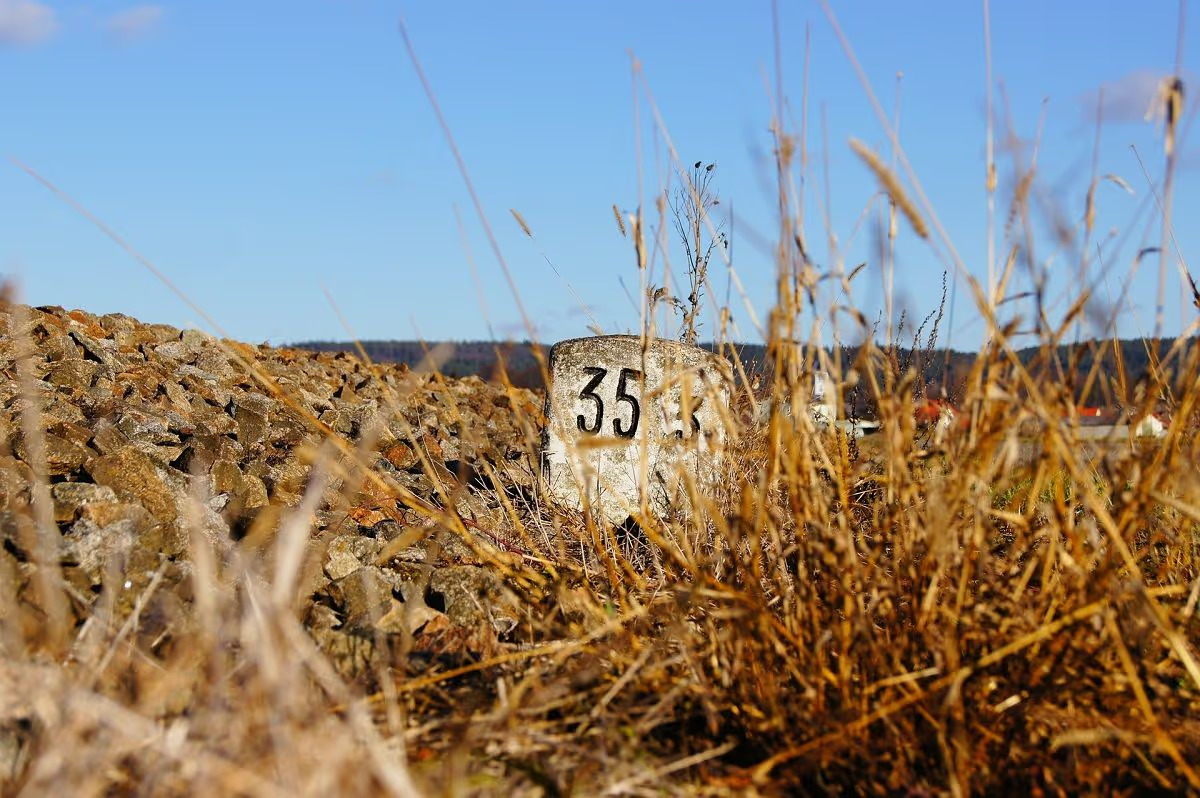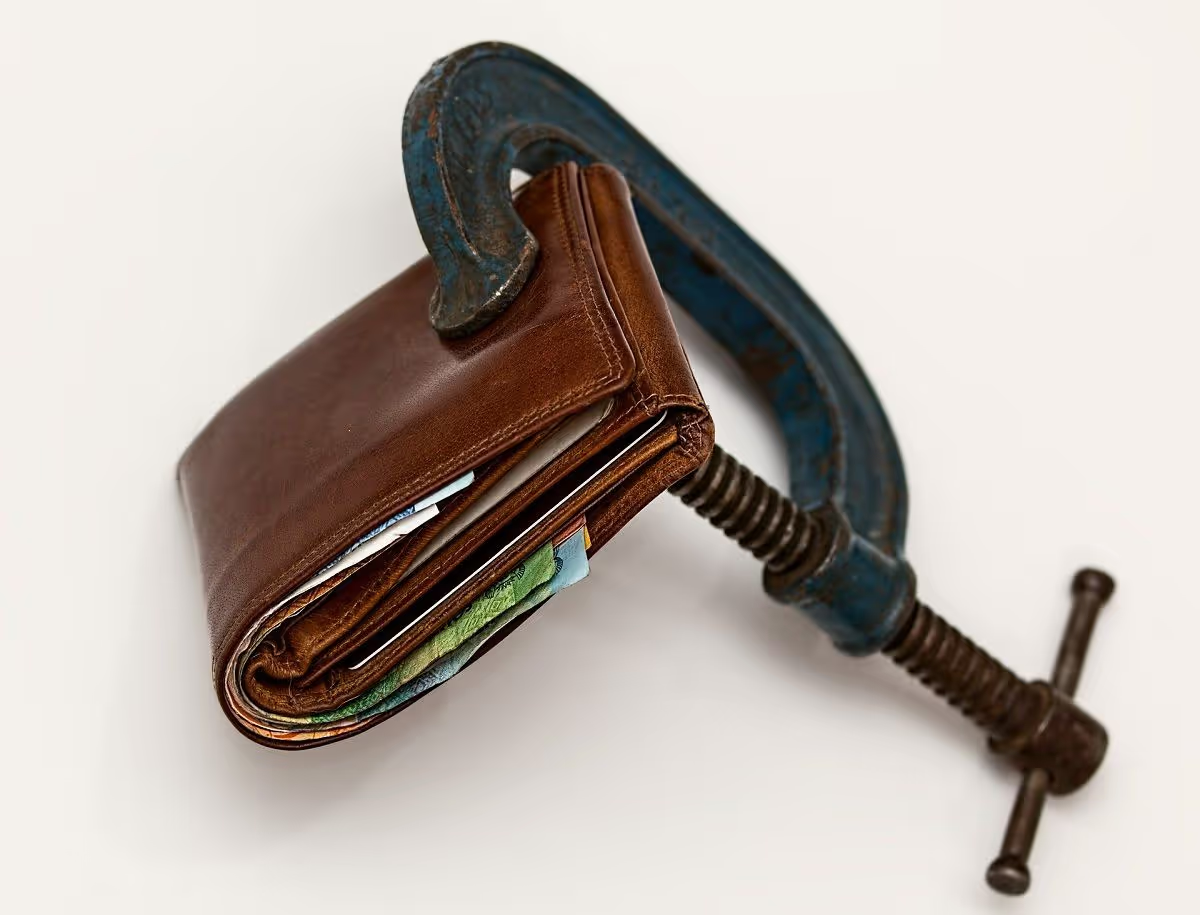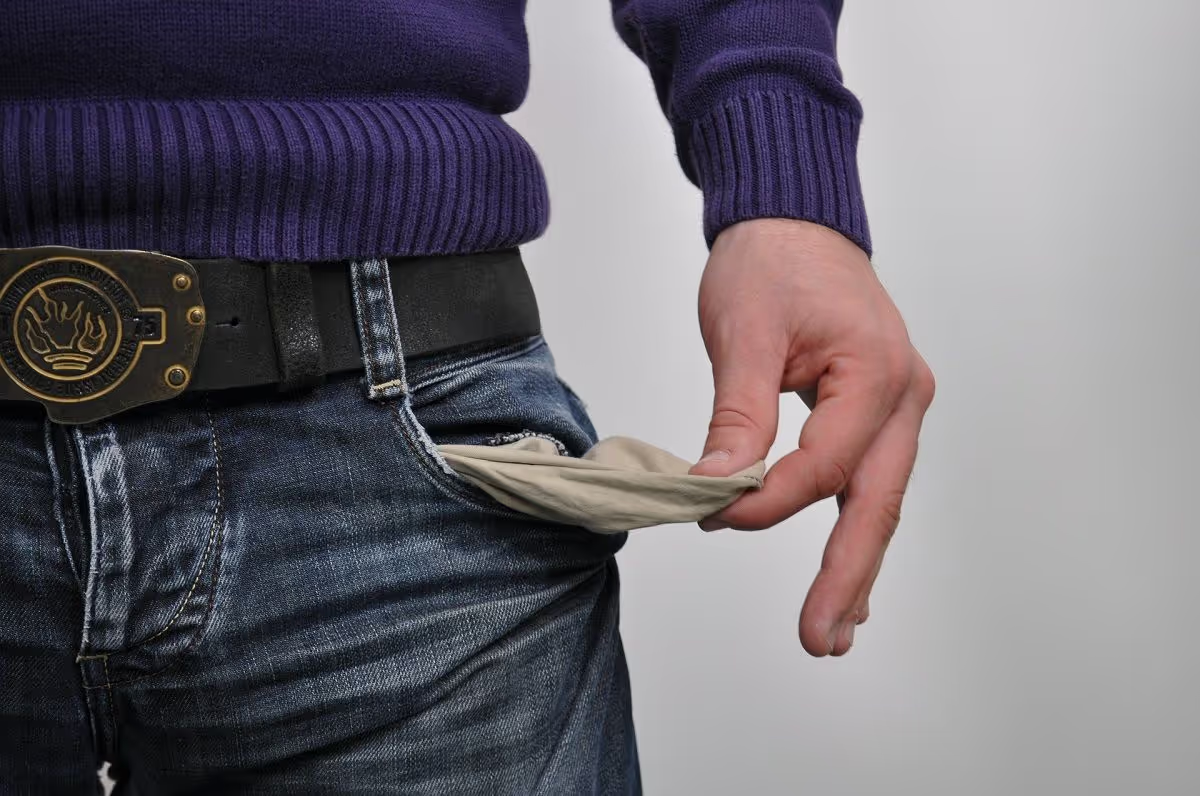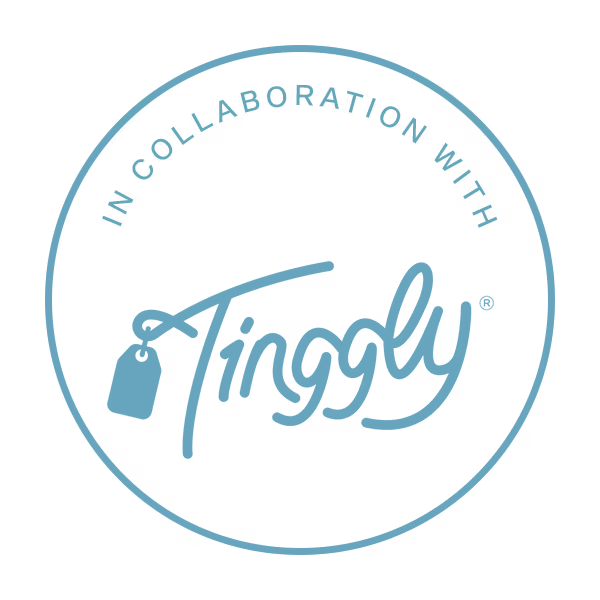How to Save Money for Travel: 10 Steps to Save $6,000 in 6 Months
A crucial part of planning any sort of trip is saving money.
In fact, whenever I talk to people about travelling the world, the biggest issue I hear spoken about is a lack of money.
Well, back in 2015 I found myself in the exact same situation.
No money to my name, except for 3 years of incredible memories from university & a desire to travel the world with Cazzy.
I’d probably spent a little too much on partying, when I should have been saving for our future travel plans.
Either way, I had a lot to save and, within a year, had created my own ideal strategy for saving money for travel.
I wanted to share that with you so that you could see the exact process I used to save a little over $6,000 in just 6 months.
And hopefully you can use the same process to kickstart your own backpacking adventure around the world!
Let’s get stuck in ...
(p.s. apologies for all the ridiculous stock photos ;) Courtesy of Pixabay and Unsplash)
My Experience saving money for travel
Back in mid-2015 I found myself in a situation that you may well find yourself in right now.
I had this insatiable burning urge to travel the world, but absolutely no money to help me do it.
I was broke!
I’d spent 3 years at university studying hard, and perhaps partying a little too hard as well, leaving me with no real savings.
In fact, if you looked closely, all you’d have found was around £50,000 worth of student loan debt.
Luckily, if you’re from the UK then these student loans don’t need to be paid back until after you start earning above a certain amount every year.
So at least that was something!
With Cazzy graduating in just 1 years time, it gave me 12 months to save as much money as possible for our then-planned 4 month adventure around South America.
I estimated that I needed perhaps £4,500 (around $6,000 at the time).
So, what did I do?
I spent the next 6 months going from job-to-job with no real plan of how I would save the money.
By the time January rolled around, I was in basically the same situation I had been 6 months prior.
I realised that something had to change and that I needed to radically change my approach to money.
It’s not that I had been lazy during the past 6 months.
In fact, I had held down a well-paying full-time job for the last 3 months of the year.
The problem was, I hadn’t properly approached money in a way that allowed me to save.
Creating a plan!
I sat down and created a roadmap, which ended up becoming the 10 steps you see below.
The exact 10 steps I followed which enabled me to save roughly $6,000USD in 6 months.
It allowed me to save enough money (plus a little more) for the trip to South America and kickstart my adventure around the world.
For those of you who find yourself in a similar situation with no real savings, I’m confident you can follow these 10 steps and also begin your own adventure.
All you need to start are two things …
- A real desire to travel
- The ability to work hard and save!
Let’s get started ...
1. Decide how much your trip will cost
First up, all you need to do is come up with a reasonable estimate of how much your planned trip is going to cost you.
Of course, this is never going to be 100% accurate, and there always seem to be unexpected costs you could never have planned for.
In fact, I think every single one of the trips Cazzy and I have ever been on has ended up costing a different amount than what we budgeted, though we do seem to be getting better at it.
Either way, I recommend you add a 10-15% buffer on top of whatever it is you estimate your trip will cost.
For example, say you think you will spend $5,000 over 4 months of travelling, add on an extra $500-$750 just to be on the safe side.
It’s better to plan for having more money than less!
I did this and I’m so glad I did.
1 week before we were set to fly, the UK referendum took place in which the country decided it would leave the EU (not my choice).
This immediately caused the value of the British Pound to fall by between 10% and 25% relative to all the currencies in South America, meaning the cost of our trip suddenly increased by A LOT!
It’s a good thing I had that buffer ...
So, how do you set a travel budget for your trip?
Well, the best way is to try and plan out your trip in as much detail as possible.
There are tonnes of blog posts online by other bloggers detailing how much their 3, 4, 5 or even 12 month trips have cost them to different regions.
As a very (VERY) rough example of costs, here’s what we’ve spent in different regions of the world (excluding flights, vaccinations, travel gear and travel insurance):
- Southeast Asia - $800/month
- South Asia (India, Nepal, Sri Lanka etc ...) - $800/month
- Europe - $1,400/month
- Northern Europe (Finland, Norway, Sweden, Denmark) - $1,800/month
- South America - $1,500/month
- Central America - $1,100/month
Cazzy gives a much more in-depth estimate of costs in our guide on the best backpacking destinations.

2. Set a HARD deadline
Now that you know roughly how much you’re going to spend, you need to set a savings deadline.
A deadline is a really powerful thing in helping you to save, especially once you start taking it seriously.
That’s why it should be a “hard” deadline, meaning it simply cannot be missed.
How did we set a hard deadline for our trip to South America?
We went ahead and booked flights!
That’s right, we spent a little over $600 on return flights, before I had even half of what I needed for the rest of the trip.
For me, this made all the difference as it meant I simply HAD to save the money for our travels, there was no alternative.
I’m not saying you have to go ahead and book your flights as well, but what I am saying is that you should set a deadline and take it extremely seriously.

3. Create milestones
Once you have your budget and your deadline in place, it’s time to set milestones.
Milestones are such a powerful tool for saving money, one that I took very seriously when saving.
What are milestones?
They are very specific monetary targets you have to hit on your way to your eventual money saving goal.
For example, say you need $6,000 in 6 months, then your milestones will look something like this:
- End of month 1: $1,000
- End of month 2: $2,000
- End of month 3: $3,000
- End of month 4: $4,000
- End of month 5: $5,000
- End of month 6: $6,000
Sounds simple right?
Yeah it is!
But having these milestones is so powerful because it breaks your eventual target down into much more manageable chunks.
Saving just $1,000 a month doesn’t seem so bad.
Especially if you then break down each month further, by saying you will save $250 a week, or just $35 a day.

4. Get familiar with all of your outgoings
This step is so important I can’t stress it enough.
Though it may sound straightforward to many, you’d be surprised by just how few people are truly on top of their monthly expenses.
Sure, $30 here for a phone bill and another $40 there for a subscription might not sound like a lot, but these costs really do add up!
So much so that, even if you were earning a very good salary each month, it’s next to impossible to properly save money for travelling.
As such, it’s now time to get on top of your expenses and the first step towards this is to write out everything in explicit detail.
For me, I actually write out a 3 to 6 month plan of exactly what will be leaving my bank account and when.
I do this as a very basic Google Sheets/Excel spreadsheet, but you can do it on paper, in Word/Docs or any other way you like.
In it, I include any standard monthly direct debits (such as my phone bill) as well as the estimated costs of any other expenses.
Including things like:
- Expected cost of food & other groceries
- Costs of presents for people’s birthdays
- Car expenses (fuel, repairs, MOT etc …)
- Rent
- Gym membership
You get the picture …
It really does help here to be as in-depth and as accurate as possible.
Afterwards, you can calculate exactly how much should be coming out each month (I recommend adding a 15% buffer on top for unexpected expenses).

5. Breakdown your expenses: essential vs non-essential
Now that you’ve got a solid list of your expenses, you have the task of deciding which of these are genuinely essential.
What classes as essential? Well …
Things that you simply cannot live without each month.
It’s time to be really strict and honest with yourself here.
If you really don’t need to be paying for something every month then it is non-essential.
One expense that I would recommend including as essential is a certain amount of separate savings each month.
That way, you’re not only saving for travelling but also building up a small rainy day fund in a separate savings account.
Trust me when I say that there’s nothing worse than returning home from travelling, absolutely broke with no other savings or money to live on.
Read Also: Monzo vs Revolut: Which Is Best For Travel?

6. Cut out non-essentials IMMEDIATELY
That’s right, it’s time to trim the fat and cut back everything you marked above as non-essential.
I recommend doing so immediately and all in one go.
Sure, this may seem painful at first, but you’ve already seen how much these costs add up over the course of 6 months.
If any of these are direct debits, then be sure to read up and make sure you can actually cancel your end.
Sometimes, you need to write to the company and give them one months notice, otherwise they have the right to fine you if you cancel your end.
With all other non essentials that you pay for as and when (such as meals out), make a commitment now to stopping those.
If this process means cutting back just $100 or $200 a month, that will end up saving you A LOT over the next 6 months or so as you save.
In most cases, I would imagine this monthly amount to be a lot more, I know for me it was.

7. Work out what your shortfall will be
Now that you know exactly what is set to be coming out of your bank account every month, you should be able to see exactly what your savings shortfall will be.
It’s a pretty simple equation:
monthly earnings - monthly expenses = amount saved per month
And say you are set to fly off on your trip in 6 months, then you can work out how much you are currently on track to save before you leave.
Is it enough?
Probably not!
Especially if you're not currently earning very much each month.
As such, you can get a rough idea of what your current shortfall will be.
Don’t worry, it’s fine that you have a shortfall, in fact you wouldn’t be reading this post unless you knew you had one!
Below I’m going to take you through the final 3 steps it takes to save the money you need for your travel plans.
But first, if you have followed these 7 steps then give yourself a pat on the back!
It may sound tedious or boring, but these steps are essential as they finally make it clear in your mind just how much you need.
When I followed these steps I found it so liberating!
I finally knew exactly what I needed to save, and it was then just a case of actually doing it and knowing that if I earnt “x” amount each month then I would definitely have saved enough.

8. It’s time to increase your earnings
Now that you’ve cut back on all unnecessary expenses and know exactly how much short you’re going to fall, it’s time to up your earnings.
How?
Well, there are literally an infinite number of ways to earn more money for travelling.
If you already work a fulltime job, then get some part time work as well.
If you are part time, get a fulltime job!
This is going to sound a little strange at first, but the way I managed to save the majority of my money for travelling was through something called matched betting.
I had a part time job working at a local store, and spent the rest of my time making money through this secondary source.
I’m not going to go through the intricacies of matched betting here, but if you’re interested then this is the site I used.
I’m definitely not saying this is how you should save money for travel, but instead use it as an example of just how creative you can be!
I literally had no idea it even existed, but when I knew I simply had to raise enough money within 6 months, I scoured the internet for ways to make money online and came upon that idea.
Since I gave up matched betting back in 2016, I’ve now used a whole bunch of different ways to make money online, including:
- Freelance copywriting
- Social media management
- Running a travel blog (more on that at the end of this post)
Working online is, in my opinion, the best possible way of saving money for travel because it can be highly profitable; and by doing it, you become exposed to even more avenues and new ways to make money.
So, if you have any skills or talents that you know may be in demand, simply search on Google to see which websites and services offer you a way to monetise upon them.
Two great sites you can instantly use to quickly get an idea of great ways to make money are:

9. Look into selling anything you don’t need
Ultimately, saving money for travelling is pretty straightforward … you try to increase as much money as possible coming in, and try to decrease what’s going out … simple!
So, with that in mind, what’s the final thing you can do to put the odds in your favour?
That’s right, sell off anything you own that you don’t need anymore.
A big thing for me was my car.
With plans to travel for so long, there was no way I was going to get any use out of it.
At the same time, it was going to fall into disrepair by not being driven and it would lose value over time.
Selling my car was a great solution for me and allowed me to quickly add more than $1,000 to my savings!
At the same time I managed to sell off a bunch of old belongings that I really didn’t need, like games and movies.
Cazzy actually went through all of her clothes (trust me there was A LOT) and found that she never even wore about 80% of them!
Because a lot of it hadn’t even been worn, or had been only once, it was an easy way to make a nice little sum to add to her travel fund.
Selling off unwanted items can actually save you money in the long run because you won’t need to pay for any maintenance or storage costs whilst you’re away travelling.

10. Revisit your plan every 2 weeks
Now that we’ve gone through all of the above steps, you have just one last thing to do …
Commit to revisiting your savings plan every 2 weeks.
For me, this ended up being such a powerful tool as it meant I was constantly on top of my goals, my targets and my savings and there was simply NO WAY I was not going to be able to save enough for our trip.
In fact, in the final couple months I was going back through the plan every single week, just to be sure I’d accounted for everything and was doing enough in those final few weeks to make sure I saved enough.
Remember, if you revisit your plan at some point and find that you’re off track and not earning enough, don’t bury your head in the sand and ignore the issue.
Instead, take action and do something about it.
Trust me, it’s all worth it in the end!

Bonus Step: Create ongoing income
The 10 steps I gave above are honestly the exact steps I used to save money for our incredible trip all around South America back in 2016.
And if you just have plans for one trip and then plan to get on with your life back home, then you can stop reading here and skip to the final section of this post where I offer up a few final top tips you can use to save money.
However, if like us you see yourself travelling for a year, 2 years or even longer, then the plan above simply won’t cut it.
Instead, you need a way to create ongoing income.
Don’t worry, there’s no sales pitch here!
We don’t offer some sort of course that you can buy where we teach you our “secrets for success” or anything like that.
Instead, I just wanted to give you a very quick look at what we did which now allows us to travel together full time and constantly save money for travelling.
Creating a consistent income stream

If you are keen to start travelling more long term beyond this trip, then you need to have a consistent income stream.
After we returned back from South America we had nothing and all money was spent, however we had started the blog which had by this point began its journey of growth which would eventually lead to a full time income.
In the meantime, we got to work researching new ways to make money online, so that we could work remotely and travel at the same time.
For a long while, this is where copywriting came in.
It was perfect for us as we were both half-decent writers and it turned out that you could pretty easily make $20-$30 per hour by writing online about virtually anything.
We started with a site called Copify and eventually moved onto securing clients who paid us directly.
Sure, we were never going to become millionaires, however by working on average just 2 hours a day, we were able to travel full time all around cheap backpacking destinations: such as Vietnam, Thailand and Sri Lanka.
During this period, we also spent roughly 6 months working/living in Airbnbs in Austria, Croatia & Ireland.
These months were honestly so incredible and I wouldn’t change them for the world.
The question is, “how do you go about creating a consistent income stream?”
Well, the answer is that there is no exact solution for everyone.
We all have different talents and skills, but the great news is that there are so many great ways to make money online whilst travelling.
The number one piece of advice that I can give you is this: GET STARTED TODAY!
It’s so easy to get caught up in all of the different options and fail to take action.
Just look at this blog for example.
From early 2019 onwards it has paid for all of our travels and is our number 1 source of income.
We absolutely LOVE working on it and are always learning new skills because of it (such as web development, social media management, graphic design and video editing).
All useful skills that we can use in the future if and when we decide to move onto something else.
However, for the first 2 years the blog made basically ZERO income!
In fact, we didn’t know when it would even start making money and if so, how much it could make.
But what we did do was just get started and began trying new things.
The great thing is that there are so many great ways to make money while abroad (many of which are far more profitable than running a travel blog).
Off the top of my head, you can consider:
- Currency trading
- Selling online courses
- Running a YouTube channel
- Teach English
- Becoming an Instagram Influencer
The list really is endless.
Just head on over to Google, do a search for “ways to make money online” and spend a while assessing all of the options.
Once you find one that you could see yourself doing, JUST GET STARTED!
Trust me, you won’t regret it.

Useful tips that help you to save for your travels
Before we finish up, I just wanted to give you a few more of my top tips for how to most effectively reach your travel savings goals.
- Keep planning your travels and getting excited - After all, the whole purpose of these savings is to eventually go travelling, so keep planning, keep getting excited,and this will fuel your motivation to keep saving hard.
- Share your targets and goals with others - Talk about how much you need to save and why you are saving with friends and family. By sharing these goals with others they become even more real, and better yet people can support you (or even give you a little extra cash towards the pot!).
- Get visual with your targets and milestones - I recommend writing all your goals and targets on paper and then sticking them to your walls so that you see them every day!
- Praise yourself when you hit a milestone - When you reach a goal every week or month, take time to recognise it and praise yourself!
- Treat yourself occasionally - It’s fine to treat yourself, just be frugal. I love how much you appreciate those small treats in times when you’re saving hard.
Well, that's about it!
I hope you’ve found this useful, and if you have any more questions or even your own ideas on how to save money for travel, then just drop a comment below.
You might also be interested in:



Leave a comment
Let us know what you think!